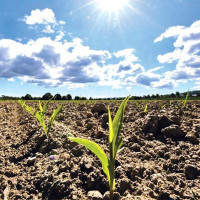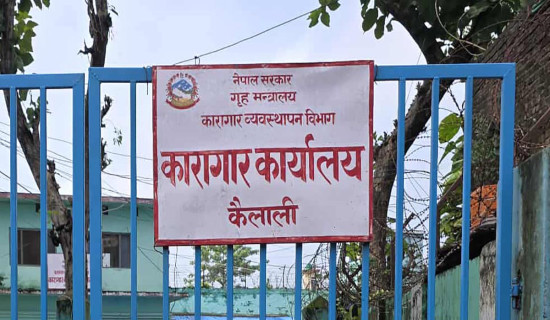- Sunday, 10 August 2025
Sierra Leone loves rice, wants to free itself from imports
Freetown, Sierra Leone, Nov. 22: Rice borders on the sacred in Sierra Leone. Unless a meal includes rice, people say, you haven’t eaten at all.
But as prices soar, consumers in the West African nation are giving up other food to buy it. That's a major reason why 83% of the population is food insecure, according to the U.N.’s World Food Program.
In the capital, Freetown, 28-year-old nail technician Anima Mangola dug into rice with stewed cassava leaves. “I’d eat rice five times a day if I had me the money," she said — even as its price has more than doubled this year.
Not everyone can keep up, and “people are suffering,” she said.
Experts blame soaring prices on a heavy reliance on imports, which supply 35% of Sierra Leone's rice and eat up $200 million annually in foreign currency.
Even though West Africa has a long tradition of growing rice and often excellent places to do it, experts said the import dependency is due to a lack of investment in agriculture, booming population growth and cheap rice imports from Asia.
Sierra Leone's agriculture minister, Henry Kpaka Musa, accused the International Monetary Fund of pressuring Sierra Leone in the 1980s to stop investing in agriculture and open its markets to imports as a condition for receiving loans.
“We used to export rice,” Kpaka said in an interview.
Now he and President Julius Bio plan to do it again. The government has raised over $620 million from global development banks this year to work towards food self-sufficiency, notably in rice, although Kpaka estimated the plan will cost $1.8 billion in all. Experts from the Ivory Coast-based research centre Africa Rice have commended the plan as “ambitious and forward-looking."
But NGOs and academics warn it will favour international agribusiness and large-scale farms, to the detriment of the nation’s 5 million smallholder farms. They point to similar, failed attempts at food self-sufficiency in places such as Burkina Faso and Ghana.
West Africa has an ancient rice tradition dating back an estimated back 3,500 years. Historian Judith Carney said its farmers were taken as slaves to work plantations in the U.S. South, giving birth to a booming rice economy.
Sierra Leone has the region's best climate and land for growing rice, with abundant annual rainfall in coastal regions.
But Kpaka, the minister, highlighted obstacles to rice self-sufficiency: poor roads to connect rice-growing areas with markets, unreliable electricity for processing, climate change and poor access to finance.
With the financial backing from development banks, he has approved plans to improve roads to the country's three main “rice bowls," create large areas of irrigated land and provide fertilizers, seeds and pesticides to smallholder farms.
“The plan starts with the infrastructure to attract the private sector to come," he said. He has promoted the plan to unspecified international investors, offering them thousands of hectares of irrigated land.
But some believe smallholders, who make up 70% of the country’s population of 8 million, will be an afterthought. (AP)

















